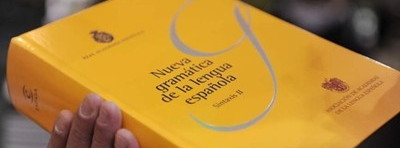 Aquel vs. ese
Aquel vs. ese
English-speaking learners of Spanish often have difficulty differenciating between the demonstrative pronouns and adjectives aquel/aquella and ese/esa.
Generally speaking, aquel is falling into disuse in spoken Spanish, with ese being the preferred option in many cases. Learners are advised to use ese where there is doubt.1
Furthermore, usage varies considerably between Spanish-speaking countries: in Spain, aquel is still used to point out a place physically (deixis ostensiva), while in many parts of Latin America aquel is generally only used in literature or when referring to things in the distant past.
"En algunos países americanos se reducen las series ternarias a series binarias de otra manera:el demostrativo 'aquel' queda reservado para los usos literarios o para deixis evocadora [...], de forma que la deixis ostensiva se lleva a efecto con los demostrativos 'este' y 'ese' (y sus variantes morfológicas)".2
1) In terms of physical distance, ese is generally used for something that is far (further than este) from the speaker and possibly closer to the listener, whereas aquel would be far away from both, and certainly further than ese, often translating as 'that over there'.
It's important to remember that, like the demonstrative adverbs (aquí, ahí and allí -read more), este, ese and aquel are relative terms, rather than referring to specific distances:
"La distancia que se establece a través de las distinciones léxicas marcadas por los demostrativos es un concepto subjetivo más que real. En efecto, la expresión 'esos montes' puede emplearse cuando la distancia física es de varios kilómetros, del mismo modo que cabe referirse con 'aquellos libros' a los situados a unos pocos metros".3
-¿Paramos en ese bar para descansar? -Mejor en aquel; así hacemos más ejercicio — Shall we stop at that bar for a rest? - That one over there is better; that way we can do more exercise ['Aquel' is used to point out a bar that's further than the one mentioned previously; the speaker could just have easily repeated 'ese', but chose 'aquel' to clarify that it is further; it's the relative distance that is important, not the absolute distance]
-¿Me dejas ese (aquel) bolígrafo? — Can you pass me that pen? [Probably closer to the lister than the speaker]
-¿Ves ese árbol ahí? -¿Ese? -No, aquel, allí ['Aquel' is used to clarify that the tree is further than the one suggested; the speaker could have said 'No, ese, allí/más allá']
2) When referring to people or things in time or memory, aquel denotes a more distant past, or at least distant in the mind of the speaker. Ese would be more likely when the thing has already been mentioned, thereby bringing it closer to the present. The speaker/writer may choose to use aquel instead of ese to show that the thing happened/existed a long time ago, holding the image in the past, in another time and place.
-Es como aquel (ese) vídeo mítico de Ricky Martin [ese -más presente en nuestra memoria] — It's like that legendary video of Ricky Martin
-¿Te acuerdas de aquel (ese) tío tan raro que conocimos en Londres? Juan se llamaba, creo [ese -más presente en nuestra memoria] — Do you remember that weirdo we met in London? He was called Juan, I think
-¿Te acuerdas de Juan de Londres? -Claro, ese tío era un bicho raro — Do you remember Juan from London? -Sure, that guy was a weirdo [Already mentioned, so 'ese' may sound more natural]
Once again, ese/esa is far more common in spoken Spanish, while aquel is seen more in literature or other written forms where the writer may want to evoke certain memories and paint a picture of something that happened in another time and place yet describe it in a way as if it were a memory or scene shared by both the writer and reader. The writer may also contrast aquel with ese to change the reader's perspective, shifting things further into the background.
"Los usos evocadores de los demostrativos constituyen una manifestación de la llamada DEIXIS EN AUSENCIA, puesto que expresan una forma de lejanía cuya característica más notoria es el hecho de que apela a cierto ámbito de nociones compartidas por el hablante y sus interlocutores, un espacio contextual implícito al que pertenecen las entidades que se señalan como si estuvieran físicamente presentes".4
-La noche que aquel tipo me violó, yo tendría que haberlo denunciado. Aquellos brazos fuertes me agarraron. Aquella música demasiado alta. El miedo que daba aquel tipo nunca se me olvidará [By repeating 'aquel', the writer is evoking a memory from the past, painting a picture of a scene that the reader is unfamiliar with, but at the same time describing it as if the reader has also witnessed it.]
-Seguía de pie en medio de ese salón, sin moverme. Aquella música sonaba demasiado alta. [By using the imperfect 'seguía', the writer is transporting the reader back to that moment, so 'ese salón' sounds more natural. By using 'aquella música' the writer moves the music into the background and seen from the present.]
4) The same applies to the neuter pronouns eso and aquello: the latter is used to refer to something in our distant memory or more remote past. It refers to an abstract thing that may not have been mentioned yet and is seen from a distance. When the thing has already been mentioned, using eso would take the idea into the present, referring more to the comment rather than the event viewed from the distant future.
-¿Te acuerdas de la noche que tiramos cohetes en la plaza del ayuntamiento? -Joder, aquello fue increíble [Aquello=todo lo que pasó esa noche; referring to the night itself, viewed from a different time and place]
-¿Te acuerdas de la noche que tiramos cohetes en la plaza del ayuntamiento? -Eso fue hace 10 años [Eso=lo que dices; referring to the comment, not evoking the past memory]
5) When referring to the position in a sentence, in written spanish, aquel/aquella are used to refer to the first thing mentioned, i.e. the former. As discussed previously, use of the tilde with the pronoun is optional, although the RAE currently recommends that it should be omitted unless there is possible ambiguity. Ese/esa is used when referring to a single previously mentioned idea.2
-Tengo un coche y una moto. Ésta me la compré en Italia, y aquél me lo regaló mi padre — I have a car and a motorbike. The latter I bought in Italy, and the former was a gift from my father
-Después de la tormenta llega la calma. Ojalá sirvan esta y aquella para reflexionar
-Mi hermano me odia. Pero ese no es el problema — My brother hates me. But that's not the problem
6) Finally, aquel/aquella can be used instead of the definite article (el, la) in relative clauses, in which case they lose their deictic interpretation (i.e. they don't point to a specific noun in time or space); this is not generally possible with ese/esa, which always refer to a specific antecedent.5
-Las palabras agudas son aquellas que (las que) llevan el acento en la última sílaba [Esas que??]
-El mono ataca a todo aquel que (el que) se acerca/acerque [Ese??]
En La Prensa
"En el colegio, la señorita Pilar había decidido que aquel año toda la clase se disfrazaría de parchís para el carnaval. Cada día, al volver a casa, tenía que ponerse aquel traje después de merendar para que su madre diera los últimos retoques, mientras su hermana se reía de él y le gastaba bromas sobre lo mono que estaba con aquellos leotardos amarillos que subían por sus piernas hasta desaparecer bajo el caparazón redondo". ABC.es -Mar 8, 2017
"El periodismo es un oficio que se ejerce con grandes dosis de curiosidad y capacidad para contrastar las cosas y saber contarlas, sobre todo aquellas que alguien en algún lugar no quiere que se sepa: el resto son relaciones públicas, como rezaba aquel viejo dicho anglosajón". eldiario.es -Mar 8, 2017
In Español-Avanzado Articles
˜
-aquel / aquella vs ese / esa-

